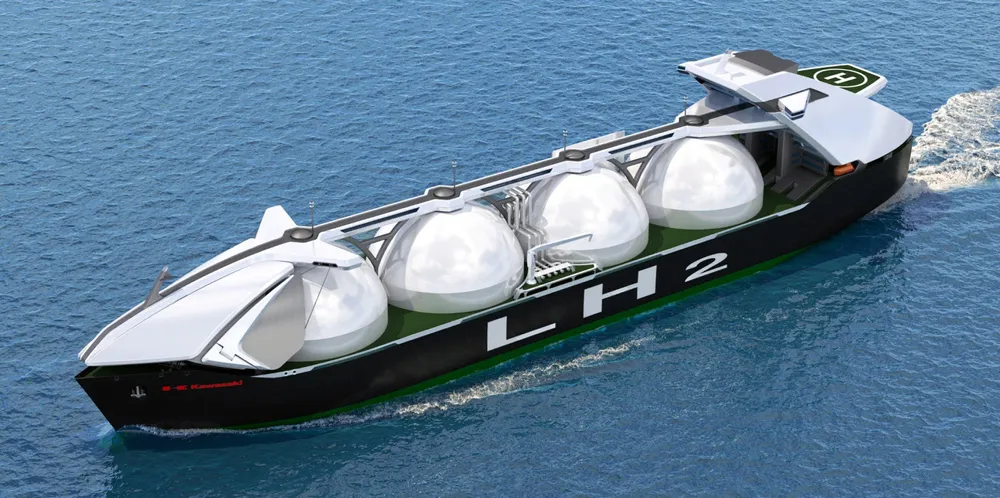Liquid hydrogen as shipping fuel | Pioneering intercontinental H2 carrier gets technical green light
Kawasaki Heavy-designed vessel engineered to store 100 times more hydrogen than shipbuilder's Suiso Frontier, which delivered world’s first liquefied H2 cargo in early 2022

The news comes as naval architect C-Job unveiled the design for a smaller liquid hydrogen tanker, in partnership with Netherlands-based LH2 Europe, a company aiming to develop an entire liquid-hydrogen supply chain in Europe by 2027.
LH2, which is headed up by a trio of former Shell executives, plans to harness excess Scottish wind energy to produce green hydrogen, before shipping it in its liquid form to Germany for use in passenger vehicles and heavy trucking.
Unlike the Kawasaki design, C-Job’s hydrogen carrier would be powered by fuel cells, and carry a total of 37,500m³, or about 2,600 tonnes of hydrogen. According to C-Job, the vessel will use vacuum insulated tanks that will lower the boil off compared to the non-vacuum or pressurised tanks typically used to store liquid hydrogen in the maritime industry.
“The boil off from the tanks will be captured and stored in a (buffer) fuel tank for utilisation in the fuel cells,” she added. “In general the boil-off is lower than the fuel consumption during sailing. However, the ship won’t sail all the time while boil-off will happen continuously.”
The very low boil-off temperature of liquid hydrogen is a key technical and commercial limitation for the fuel’s transport, as it must be kept below minus 253°C to maintain its liquid state. This is achieved by insulating the tanks, however the longer the fuel is stored — and the further it is transported — the more heat leaks in and the more boil-off occurs, putting more pressure on the tank and degrading the quality of the liquid product.
Typically, boil-off in LNG vessels is either vented into the atmosphere or, if space and machinery allow, reliquefied. However, it would make commercial sense to use that boil-off as a fuel, rather than simply releasing it into the atmosphere, especially considering that both methane and hydrogen are greenhouse gases, while venting also carries a risk of explosion.
In fact, when the Suiso Frontier was docked in Australia in February, it briefly caught fire.
Even before transport, liquefied hydrogen costs 15 times more to produce than green ammonia, according to Japanese estimates. Then during transport, ammonia is kept in a liquid state at just minus 33°C, reducing the cost of storage and the potential for boil-off, while methanol is a liquid at room temperature.
As ammonia and methanol have 1.5 and two times the energy density of liquid hydrogen by volume, respectively, and because they are easier to handle, it is no surprise that they are fast emerging as the most popular “green” shipping fuels of the future.